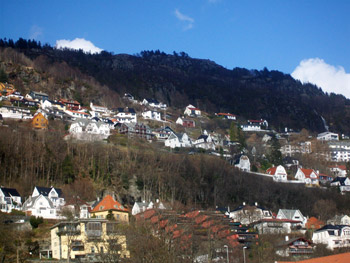
by Marc Latham
I traveled on the sea to Bergen
I traveled with the rain to Bergen
I traveled through history in Bergen.
In Bergen they all blended together.
Bergen’s beautiful location on Norway’s south-western tip; gateway to Norway’s two UNESCO natural heritage fjords; has almost daily rain. Moreover, the precipitation regularly falls as hail and snow even in May. However, I also saw how beautiful the water looked sweeping the air from Vagen bay to Mount Ulriken; the highest of the seven mountains circling Bergen’s UNESCO cultural heritage Bryggen docks.
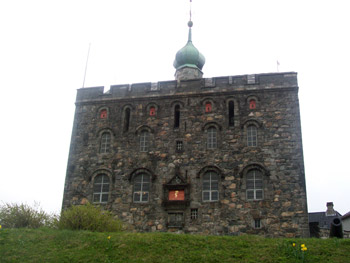 Although the sea seems to stop a long way from the mountains, I realised they meet nearly every day; and that it is an ancient tale painted differently each time. Sometimes the sky expresses itself with bold snow; leaving a picture that demands your attention. Other times it impresses with light brush strokes of ephemeral rain; hiding the boundary between wet and dry land. If you look closely, it often seems to use two hands to do both of the above at the same time. Set against Bergen’s northern mountains, I noticed precipitation falling as snow and rain at the same time for the first time.
Although the sea seems to stop a long way from the mountains, I realised they meet nearly every day; and that it is an ancient tale painted differently each time. Sometimes the sky expresses itself with bold snow; leaving a picture that demands your attention. Other times it impresses with light brush strokes of ephemeral rain; hiding the boundary between wet and dry land. If you look closely, it often seems to use two hands to do both of the above at the same time. Set against Bergen’s northern mountains, I noticed precipitation falling as snow and rain at the same time for the first time.
The sun does shine on Bergen, and was shining brightly when I arrived. After sunshine and showers, land and sea, three or four hours journey from Haugesund airport, I presumed I was enjoying sunshine after rain in Bergen as the blue sky and Bergen’s colourful mountain houses seemed to sparkle in the cold air. I’d seen this in many photos over the years.
I’d planned to start my travelling life in Bergen twenty-five years ago; working the summer picking fruit before heading south; but a later summer start meant I headed straight south. The ferry I’d planned to take had now stopped running, but cheap flights are plentiful from the U.K.
 A combination of the visual splendour and memories of past hobo travels inspired me to walk to the Vandrerhjem Montana hostel half way up Mount Ulriken, where I’d booked five nights accommodation.
A combination of the visual splendour and memories of past hobo travels inspired me to walk to the Vandrerhjem Montana hostel half way up Mount Ulriken, where I’d booked five nights accommodation.
The choice of hostel was justified that night by the sunset. It was at the surprisingly late time of 10pm; around the same time as midsummer in the U.K. I’d thought Bergen would be at about the same daylight hours as the U.K in early May. As the sun settled into the light cloud horizon like a fried egg in a frying pan, the fjord lit up like a real fire, and the mountain houses shone like precious topaz.
The next morning I completed the climb to the top of the 643 m (2,110 ft) Ulriken, providing a panoramic view of Bergen stretching from western sea to eastern valley and lakes. For those who don’t fancy a hike/climb, there is a cable car up to the peak. There is also the Floibanen Funicular from Bergen’s centre to Ulriken’s western neighbour Mount Floyen.
The next day I reached Bergen’s historic Bryggen docks, after circling around Bergen’s centre in another mixture of sunshine and showers shining and sweeping from the south and west.
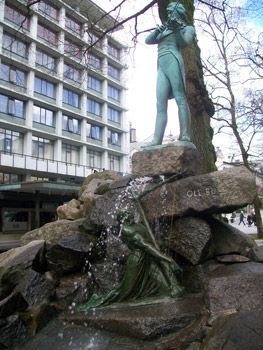 Passing the lake-looking Store Lungegardsvann; which is in fact the sea reaching around Bergen’s centre like a curling outstretched arm and big clenched hand; I walked up past parks decorated with Edvard Greig and Ole Bull statues to the colourful Logen theatre house.
Passing the lake-looking Store Lungegardsvann; which is in fact the sea reaching around Bergen’s centre like a curling outstretched arm and big clenched hand; I walked up past parks decorated with Edvard Greig and Ole Bull statues to the colourful Logen theatre house.
I then wandered to the left, taking me to the sardine factory rather than Bryggen. With all day to spare and nothing else to do I wasn’t too perturbed by this; it actually worked out well when I happened upon a sea-front green park area with totem pole and trees.
So I reached Bryggen from the south, passing the 17th century Nykirken church, tourist office and fish market. While Bergen’s centre to my right has many wonderful buildings, churches and statues, there is no doubt that Bergen’s old docks Bryggen area is the city’s architectural jewel in the crown.
I booked a boat trip to the Osterfjord for the next day at the tourist office. It turned out to be well worthwhile, as I sailed through a steep-sided fjord for the first time, alongside Europe’s largest inland island; each side of the fjord was under deep snow at the time, inspiring the imagination as well as providing ascetic beauty. The scenery must have changed little since Vikings sailed the waters.
 Bergen’s distinctive docklands buildings are built on the original site of the city, dating from the 11th century. Its strategic location helped Bergen become Norway’s capital and the largest city in Scandinavia during the Middle Ages. It was a member of the Hanseatic League trading confederation, and there is a museum commemorating merchant life from 1360-1754 in the red, green and yellow wooden buildings on the eastern edge of Bryggen.
Bergen’s distinctive docklands buildings are built on the original site of the city, dating from the 11th century. Its strategic location helped Bergen become Norway’s capital and the largest city in Scandinavia during the Middle Ages. It was a member of the Hanseatic League trading confederation, and there is a museum commemorating merchant life from 1360-1754 in the red, green and yellow wooden buildings on the eastern edge of Bryggen.
The western side of Bryggen leads to the Bergenhaus Fortress, which used to guard the entrance to the harbour. Haakon’s Hall and a defensive tower survive from the 13th century. There is another green park area inside and around the fortress grounds. It leads to Bergen’s old town and more colourful harbour buildings. The old town’s cobbled streets are now filled with quaint shops and cosmopolitan eateries.
After five days I took the railway east to Voss, before completing the famous train journey to Oslo over the Hardangervidda plateau. There was spectacular forest, lake, river and waterfall scenery under the winter wonderland world at high altitude.
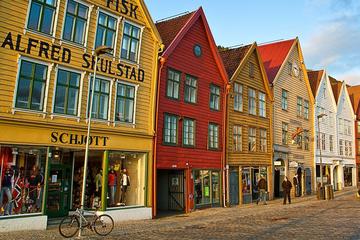
Private Shore Excursion: Bergen By Car
If You Go:
Marc flew with Ryanair from London Stansted to Haugesund. Bergen is a major airport, but there were cheaper flights to Haugesund at the time.
Marc stayed at the Bergen Vandrerhjem Montana hostel.. For those who would rather stay in the centre there are many hostels and hotels in Bergen.
Norway has a short summer season.
There are good savings on public transport in Scandinavia if booked ahead. Marc travelled in Norway by train and from Oslo to Stockholm on Swebus.
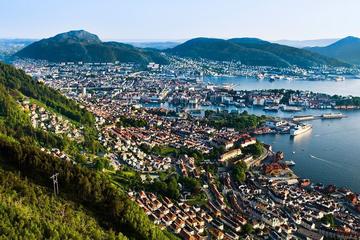
Bergen Shore Excursion: Bergen Walking Tour
About the author:
Marc Latham travelled to all the populated continents during his twenties, and studied during his thirties, including a BA in History. He now lives in Leeds, writing from the www.greenygrey.co.uk website. He has posted a Norway narrative and more photos on his travel25years.wordpress.com website. His Norway travels inspired a couple of Folding Mirror poems, published on his fmpoetry.wordpress.com website.
All photos are by Marc Latham.



Leave a Reply
You must be logged in to post a comment.